In this article. I will be looking in-depth to what plant troubles to prevent and avoid in container gardening. In a previous article, I have discussed pests and diseases that can affect container plants in that article I only scratched the surface of what problem container plants can suffer from. I feel now is the time to discover more about plant troubles, so that:
a) They can be minimised and
b) Dealt with in a quick and decisive manner.
Firstly, it must be realised that even in the best garden in the world which is looked after by the best gardener, will still have problems. You are constantly battling nature where nature often wins. It is ridiculous to only believe that sickly plants are the only plants attacked in gardens as this is clearly not true.
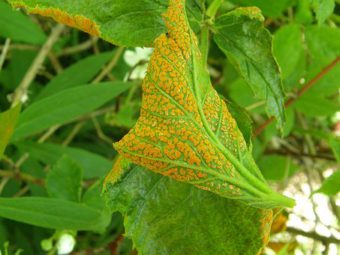
You must be on constant guard against insect and fungal invaders that can attack plants in a blink of an eye.
There are a frighteningly large number of invaders but you are likely only to see a few of them in a year in your container garden. You are more likely to be harmed with an enemy from within your garden than from outside invaders.
POOR COMPOST, LACK OF WATER AND MORE ARE THE CAUSE
The problems are likely due to poor compost, lack of water, too much water, inappropriate feeding, too much shade, severe frost, the wrong plant selection, or simply not following instructions.
To have healthy plants you need to be proactive and prevent trouble before it starts, and to deal with it, quickly and merciless as possible.
Be proactive, prevent problems before it starts.
Choose wisely; do not buy any soft bulbs, lanky bedding plants or diseased looking perennials. Even if you buy good, quality stock it will not succeed if it is planted in the wrong location as some are too tender to plant directly into your garden. Plant your plants in the right location so sun lovers are planted in full sun, and shade lovers are planted where the sun will not reach them.
YOU HAVE TO GET A NUMBER OF THINGS RIGHT
Get the compost right. A strong growing plant is more likely to recover from disease and pest attacks. Grow the plant you select in the right type of compost, as suggested in my many articles on my website.
Remember to use good quality compost, enriched if it is required, and mixed with grit if needed, to keep weeds to a minimal.
Plant or sow the chosen variety of seeds and plants in the correct manner in the best quality compost, at the correct spacing between plants. Trouble lies ahead if you plant plants in a wrong manner or it is growing in compost which is not the best.
You have to ensure that there are no air pockets and that the roots of the plant are spread out as much as possible, to keep it from growing around the container wall in a circular manner.
When sowing seeds you need to sow the right seeds at the right time. Sow too early outside and the seeds will rot. Sow too late and the flower display may be too short. When sowing indoors you must remember to harden off seedlings before moving them permanently to an outdoor environment.
Be litter and clutter-free. Boxes and old pots scattered everywhere outside are a breeding ground for slugs and woodlice. Remove any rotting plants as quickly as possible to avoid attracting pests to your garden.
FEED THE PLANTS REGULARLY
A hungry plant is an unhealthy plant, as it will suffer from nutrient deficiencies.
This includes poor growth, undersized blooms, lower disease resistance and discoloured leaves. Always read and follow instructions on storage containers to the letter. Overfeeding can cause scorching whilst unbalanced fertilizers with too much nitrogen will produce a lot of leaves and few blooms
INSPECT PLANTS OFTEN
Look at your plants regularly and then take action when a problem is observed. Once the problem has been identified, act quickly, treat quickly, as this will increase the chance of survival. A plant that is treated much later can become impossible to treat, especially if it gets out of hand due to forgetfulness or neglect.
HOW TO DEAL WITH PROBLEMS ONCE THEY HAVE BEEN OBSERVED?
Remove any you can see by hand. Minor attacks by caterpillars or leaf miners can be controlled by handpicking any affected leaves, provided not too many are affected. Large infestations will need to be dealt with using techniques highlighted later on in this article.
Plants that suddenly die need to be post mortem to see if the cause of death can be identified. You will need to examine the roots and the compost it was planted in, looking out for grubs damaged roots and discoloured leaves. In containers, it is best to throw the compost away and plant a new specimen in fresh, disease-free compost.
HAVE A PLANT FIRST AID KIT
You notice a problem on your plants but you cannot go to the shop for supplies of fungicides and insecticides, as they are shut. What are you to do? The problem needs to be dealt with today and not tomorrow. You will not have time to deal with the aphids, caterpillars, or slugs that can do serious damage overnight.
It is a good idea to have a small selection of pesticides in your shed or garage for emergency use. You will need a general-purpose insecticide for leaf pests and a general fungicide for fungal diseases. Insecticides and fungicides have short shelf lives and so it is considered best to buy small qualities rather than many bottles. They can become less effective over time.
SPRAY IN A CORRECT MANNER
Once diseases and pests have taken hold, it is necessary to act quickly. Follow written instructions on the label carefully, making sure that the product selected is recommended for the plant in question and for the pest or disease identified.
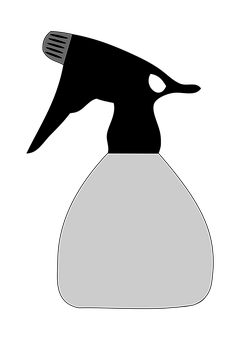
Any dilution that is required, must be made to the right concentration not too dilute to not be effective or too concentrated to cause damage to the plants. If you are a shop-bought spray bottle, make sure that no weed killer has been used in it before, otherwise, you will have killed your plants.
To get around this I use four different coloured bottles for different chemicals; one colour for weed killer, a second colour for insecticides, a third colour for fungicides, and a fourth colour for foliar feeds. Remember to stick to one colour for each category and to label well using permanent markers.
PICK THE RIGHT DAY
You need to pick a day where the weather is not sunny or windy, Spray flowers in the evening when bees have retired to their hives. Use the spray in its original spray bottle, if it comes in one. If you have to make your own, you will need to buy your own spray bottle and fill it with a mixture of chemical and water to the right concentration.
I would use a permanent marker to write what is in the bottle sprayer. To avoid confusion and contamination. Do not spray on flowering buds, as this can damage them.
Practice good safety when handling insecticides and fungicides. It is advised to use masks, goggles, and gloves. Wash hands after use and store them in a safe place, away from children, once you have finished using them.
It is advised to store them in the original containers, never in an unmarked container, as this is asking for trouble.
A QUICK PICK-ME-UP
Plants like humans can be sickly caused by diseases or pest attacks. The best way to get things going again is to use a foliar feed fertiliser, which is recommended to be sprayed, directly on the leaves. This should give the plant a quick boost.
ROOT TROUBLES
Thankfully container plants do not have many compost-based pests. There are some but not often found as those planted directly in the ground. Leatherjackets, wireworms, millipedes, cutworms and chafers are rare in container gardening. Most pests in the soil eat away at plant roots and by the time they are noticed the plant may be beyond recovery.
The major problem is that no compost pest killer exists. Biological ones based on nematodes will control vine weevil, chafer grubs and cutworm, whilst the rest are picked out when the plant is removed.
VINE WEEVILS
The white grubs are extremely destructive underground outdoors or indoors. It eats the roots of many plants, especially container specimens, in particular, alpines.
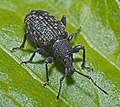
If a plant sudden dies, look into the compost for a rolled-up, white grub. If present in containers throughout the compost, it is best to pull out all plants and discard the compost. Disinfectant the container and put fresh, new compost in before planting a new plant in.
BLACK ROOT ROT

This is a common disease affecting many plants, where above-ground the leaves turn yellow and wilt. If you look at the roots underground you will see that the roots have turned black. There is no treatment, so prevention measure are required.
Do not use unsterilized compost in your containers or uncomposted leaf moulds outdoors. It is best not to replant the same plant in the infected compost. You will need to either plant another species or refresh the compost.
TUBERS, CORMS AND BULB TROUBLES
Many plants we plant in our container gardens are raised from bulbs, corms, rhizomes and tubers. Where these fleshy organs are at risk throughout its life cycle.
They may be attacked within the bulb by caterpillars, bulb aphids, flies and eelworms, or by animals who are searching for food. Root pests was highlighted in the previous section, will also attack bulbs, corms, rhizomes, and tubers.
BULB APHIDS
Colonises of aphids may attack tulip and lily bulbs, and on crocus and gladiolus corms in storage. They tend to shelter and feed under the outer scales. The result would be that young growth is severely affected in infected bulbs when it is planted. All you need to do is rub off the aphids before planting. No other treatment is required.
BULB ROTS
There are serious storage rots that affect bulbs.
- Narcissus Smoulder caused bulbs to decay, where small fungal growths appear on the outer scales.
- Basal rot begins at the base of the bulbs of daffodils and lilies, where the brown rot spreads upward through the inner scales.
- Tulip fires is a serious disease of bulbs, where small fungal growths appear on the outer scales and both shoots and flowers are damaged.
In all these cases the procedure is the same. Dig up affected plants and destroy. Never plant soft or mouldy bulbs. Always check bulbs in storage frequently.
CORM ROTS
There are several storage rots that occurs in crocuses and gladioli corms.
There are dry rot, which causes black spots to appear on the corm, that gets bigger and eventually the tissue completely decays.
Hard rots has brown spots on the corms, which causes them to shrivel.
Scabs have round, brown and shiny spots.
Core rot is different from the other rots, as it starts at the centre of the gladiolus corms and then spread outward. It is a damp rot caused by excessive moisture.
In all case, the procedure is the same, dispose of affected plants, destroy mould and soft corms. Never plant mouldy corms and any rotten bulb should be discarded.
NARCISSUS FLY
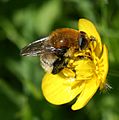
This affects daffodil bulbs as they are soft and rotten. The bulb produces few leaves and no flowers when it is planted in compost. It is caused by some 1 to 1.5cm long maggots that bore into the bulb.
Control is not easy, where the best procedure is to lift diseases bulbs and dispose of. Do not plant any bulb that feel soft to the touch. Maggots can be controlled by digging around bulbs to bring up any maggots.
RHIZOME ROT
This is a destructive disease of flag iris, especially if the compost is badly draining. The plant starts to turn leaf tips yellow, and it starts to wither. Later on, the leaves collapse and dies. The rhizomes develop a slimy yellowish rot.
Plants can be saved if the soft, diseased part of the rhizome is cut away, as soon as it is observed. Treat the compost with a fungicide as well.
STEM AND BULB EELWORM
This affects daffodils, tulips, hyacinths, etc, where the bulb turn soft and rotten. Tell-tale signs are dark ring that can be seen if the bulb is cut into half. Daffodil leaves grow pale, twisted and bear characteristic small yellow swellings on the surface. All soft bulbs should be thrown out before planting.
TUBER ROT
Dahlia Tubers can be destroyed in storage by various fungal diseases. To prevent this from happening, stand the tubers on its head after lifting and allow them to dry. Remove any remaining compost before storing them in boxes in a frost-free location. The tubers will need to be inspected regularly, where any diseased part that develops is cut away.
HOLES IN LEAVES
Holes in leaves are sometimes caused by frost or winds, but the usual culprit is an insect pest.
Seedlings, small plants and the lower leaves of tall plants can all be seriously damaged from slugs, snails, woodlice, and weevils.

All of these are night feeders and are totally invisible during the day. Pests from above the ground can attack leaves at all levels, where capsid bug produce small holes and caterpillars form larger holes at best, completely skeletonising leaves at worst. There are many types of caterpillars, which are mostly moths and not butterflies. The only exception is the cabbage white, which is a true butterfly.
CAPSID BUG
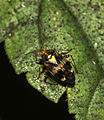
These little bugs are a serious pest of Dahlias, chrysanthemums and salvias. At first, the leaves are spotted, until the raised holes with brown edges are formed, as the hole enlarges. The leaves grow distorted and puckered. To treat spray the plant and the compost below with an insecticide.
CATERPILLARS
There are many leaf-munching caterpillars that attack plants, some are not often seen, whilst angle shades moths and cabbage white butterflies can cause serious damage. The best treatment is to pick off by hand any visible caterpillars. If the damage is too widespread, use an insecticide designed especially for caterpillars.
The line-up of caterpillars to look out for includes:
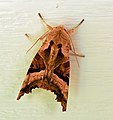
Angle Shades Moth– A 5cm, long, smooth, green caterpillar that can be a serious nuisance of dahlias and many perennials.
Cabbage Moth– A 3cm long smooth, light brown caterpillar which attacks several annuals and perennials. This vicious eater can skeletonize leaves.
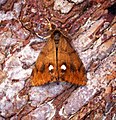
Cabbage White Butterfly – A slightly hairy caterpillar that is light brown in colour. It grows up to 3cm long and will attack several annuals and perennials. Will also skeletonize leaves.
Vapourer Moth– A colourful moth that is brown and red, which grows to 2cm in length. It feeds on the leaves of many perennials in spring and summer.
EARWIG

This pest attacks chrysanthemums, Dahlias, and other garden plants during the summer and autumn months. They are night eaters, hiding in the petals during the day. To treat, shake the stems and flowers, where they can be trapped in upturned flower pots full of straw.
FLEA BEETLE
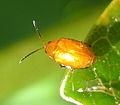
These are small black or black and yellow beetles that attack the seedlings of stock, wallflowers, Aubrietia and Alyssum plants. In leaves, numerous small round holes appear, where grown is slowed down and seedlings may be killed. Spray the young plants with insecticides as soon as the first sign of damage is observed.
PEA AND BEAN WEEVIL

This common pest of the legumes can be damaging to flowers belonging to the pea family, such as sweet peas and lupins. Seedlings are most at risk, where U-shaped notches appear on the leaves. Leaves of mature plants can be damaged but spraying is often not necessary. Young seedlings can be treated by spraying with insecticides.
SLUG AND SNAILS
These serious pests stack many plants, where irregular holes are formed and slime trails can be seen. Damage is at the greatest in shady, moist sites. The pest generally hides under garden rubbish during the day, so the best way to deal with them is to keep rubbish and hiding spots to a minimal.
You will also need to cultivate the compost the plant grows in to bring up any slug or snail egg sacs. Scattering slug pellets around the plant is an effectual treatment to keep slug and snails at bay.
WOODLICE

This familiar pest is abundant in shady gardens, where they hide under stones or leaves during the day and devouring young leaves of a wide range of flowering plants during the night. Woodlice often attack plants that have already been damaged by other pests, but the damage is not extensive. You cannot control them easily but it is best not to leave rubbish in the garden.
LEAF AND STEM TROUBLES
There are numerous problems that will attack leaves and stems. Aphids and powdery mildew are serious problems in dry summers, whilst grey moulds are destructive in wet weather. Starvation can lead to serious nutrient deficiencies and poor leaf development. Weedkiller sprayed onto plants can lead to severe leaf distortion.
APHIDS
There are several species of aphids that ingest plants in warm, settled weather. The commonest is the black bean aphid and the peach-potato aphid, where young shoots are targeted, becoming distorted and weakened.
The leaves later turn black and get covered with sooty moulds over the sticky honeydew they produce. To prevent this keep watering the containers in dry weather and spray with insecticides when colonises are noticed.
CHRYSANTHEMUM EELWORM
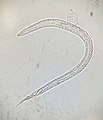
The leaves develop brown areas between the veins in asters, peonies, chrysanthemums, begonias, and some ferns. This is caused by leaf blotch eelworm, which can kill plants if the infestation is severe. Treatment is to pick off and burn affected leaves.
COLD DAMAGE
A severe frost in spring can destroy developing leaves by destroying chlorophyll. The affected leaves when they grow can be yellow edged in some plants, whilst in others, the leaves can be white banded, especially in daffodils. All you need to do is pick off badly affected leaves and spray with a foliar feed to speed recovery.
DAMPING OFF

A serious fungal infection of seedlings where roots and stems bases are attacked. Shrinkage and rot occurs at ground level and the seedling topples over. To prevent this sow seeds thinly and to water from underneath.
You also have to ensure that there is adequate ventilation and to remove any collapsed seedlings immediately. It is also good to practice good hygiene and to ensure that all seed trays and tools have been disinfected with a weak solution of disinfectant before use.
FOOT ROT
The tell-tale sign of this fungal disease us the blackening and rotting of the base of the stem. It has many names depending on which plant is affected, such as germanium blackleg, peony sickness, campanula crown rot, etc. To avoid this use sterilised compost in containers. No fungicides exists to treat the condition.
FROGHOPPER

The fleshy white nest of ‘cuckoo spit’ occurs on the stems of many flowering plants and are familiar to everyone. This is caused by 0.2cm tall froghopper insects, which suck the sap of these plants and distorts young grown. To treat hose with water, as insecticide spraying is not recommended.
LEAF HOPPER

Mottled patches or flecks appear in the leaves of pelargoniums and primulas in the summer months, when this pest attacks. It is caused by small yellow insects, where the direct damage is usually slight. The only problem is that a virus can be transmitted, which can cause you plant to look sickly. No treatment exists.
LEAF MINER

This can be readily seen as long-winding tunnels that are borne in the leaf tissue. This is caused by small grubs, at first, the tunnels appear white, but later they turn brown. Chrysanthemum foliage is commonly attacked by these grubs. In carnations the grubs’ produces blotches on the leaves, which occasionally if a bad infestation is experienced, can kill them.
Best treated by picking and burning affected leaves. No chemical treatment exists.
LEAF SPOT

This is a group name for a wide range of fungal infections, which appear in many plants. Round or oval brown or black spot is a disease found in phloxes, polyanthus, poppies, irises and Sweet Williams.
Ring spot of dark concentric ring of spores is commonly found in dianthus specimens. Leaf blotches of irregular-shaped spots can affect delphiniums. It is best to pick off diseased leaves as no chemical treatment exists.
LEAFY GALL
Sometimes short shoots with thickened, distorted leaves appear at the base of plants. This disease is spread by tools or by taking cuttings from diseased stock. Affected plant should be lifted and destroyed. This diseases often affect sweet peas, chrysanthemums, dahlia and pelargoniums.
GREY MOULD(BOTRYITIS)
This is a destructive fungal disease, where fluffy grey mould appear on leaves. It attacks many bedding plants in wet seasons, where stems are attacked. Any mouldy leaves should be removed, whilst severely infected plants should be lifted and disposed of.
DOWNY MILDEW

This is less likely then powdery mildew, although antirrhinums, sweet peas, poppies and wallflower can be affected in damp weather. It appears on leaves where the upper surface turns yellow with greyish moulds growing underneath. Plants tend to be crippled by severe infections. No chemical treatment exists.
PHLOX EELWORM
The young leaves of plants that are infected are soap-like and will die off early.
Older leaves will be distorted. This effect several perennials such as phlox, gypsophila and aubrietia, whilst the crown of polyanthus are killed. If the plant is obviously affected it is best to pull up and burn infected specimens. Do not replant anything in the compost and it is best to empty the container and use fresh compost.
POWDERY MILDEW

The main symptom is a white, flurry grown on the leaf surface. It is encouraged by overcrowding and lack of moisture in the compost. It commonly affects Asters, Delphiniums and Chrysanthemums. To treat it spray with fungicides at the first sign of disease and repeat one week later. If it reappears you will need to spray again.
RED SPIDER MITE

This minute red spider appears on the underside of leaves, which develops a bronze colour. Look for fine, silky webbing as a tell-tale sign. There is no treatment available.
RUST

Another fungal infection that causes yellow, orange or red round spots to appear on leaves and stems. It is a common disease of snapdragons, hollyhocks, pelargoniums, carnations, chrysanthemums and sweet Williams. All diseased leaves should be picked off and a fungicide spray used every two weeks.
STEM ROT
There are several types of stem rot, all of them serious. In this disease, part or all of the stem rots, and the leaves wilt. Sclerotinia diseases, commonly cause diseases in herbaceous plants, where black blotches occur in the plant. No treatment exists where badly affected plants need to be lifted and burned.
VIRUS
There are many root causes of viruses from insects, tools and human touches. Each virus has a different symptom, leaves may turn yellow, covered with yellow spots, look mosaic, crinkly and distorted or be white veined.
The stems themselves may be brown steaked or be stunted and distorted. If you are sure your plant has a viral disease, the only known solution is to lift and burn. To avoid viruses it is best to buy fresh stock and keep aphids away.
WILT

Leaves and shoots sometimes look very bad, even if the compost is moist. If the plant is snapdragons, asters, sweet pea, carnation, chrysanthemums, lupins, or poppies, then the cause is a soil-borne fungus.
No known cure exists bur diseased plants need to be lifted and destroyed. As ever do not plant new specimens in the compost but use new and fresh compost to plant new plants in.
BUD AND FLOWER TROUBLES
There are many bloom troubles that result in poor size and quantity. It may also result in damaged, distorted or spotted flowers. You will also need to watch out for slug and snail damage, eelworms, tulip fire and angle shade moth damage.
APHIDS
Aphids, both greenfly and blackfly, can literally cover flower buds. It seriously reduces the quality and quantity of flowers. It often occurs when the climate is warm and dry, where large colonizes build up on buds of many types of flowering plants. This will cause the flowers to open undersized. In a severe attack, the buds may not open at all, Spray with insecticides once the pest is observed.
BIRDS
Birds are extremely selective in their flower choice, where nearly all blooms are ignored. The only blooms that are consumed are polyanthus, Primula ‘Wanda’ and yellow crocus. The flowers are stripped bare by sparrows and blackbird.

What may be strange is that flowers in one’s garden is completely ruined, whilst the same plants in a neighbouring garden are ignored. Netting can be used but this is unsightly. You may try bird scarers but they are hit and miss.
CAPSID BUG
The bug not only attack the leaves but they can attack dahlias, chrysanthemums and other flowers. Buds may die and if they open they will be loped-sided. To treat use insecticide sprays, 2 to 3 times at 2-week intervals.
COLOUR BREAK
In some flowers petals sometimes develop streaks or patches of abnormal colours. The colour variation is caused by a virus and no cure exists. Tulips are the most likely effect, but double chrysanthemums, lilies, violas, and wallflowers can also be affected.

In tulips, the multicolours is desired and bred into the stock. But in a single colour scheme, the effect can be undesired and the plants should be destroyed if you want a pure stock of one colour. If you do not mind you can keep the plant.
If phyllody occurs, where a virus-like condition cause the flowers to turn green and if it is observed the plant should be destroyed straightway, to prevent it from spreading
EARWIG
Another pest that tackles the leaves and flowers. It attacks chrysanthemum and dahlia blooms, where at night the petals are eaten. They will alter the flower appearance and make them look unsightly. For how to deal with this problem see the previous section on holes in leaves.
FEW FLOWERS
This is a common problem in plants where few blooms are produced. The most likely causes are too much shade and too much nitrogen. Too much nitrogen cause leave production instead of flower production. To correct this you need to use a fertilizer rich in potash to redress the balance.
Other possibilities include failure to pinch out the growing point of bedding plants to promote bushiness. Failure to deadhead is another possible as this will stop repeat flowering.
Failure to water in dry weather can lead to flower bud drop, which can also occur if there is a late frost or the weather is too cold. Also, pests and disease described in this article can reduce the number of blooms.
GREY MOULD (BOTRYTRIS)

Grey mould not only attacks leaves and stems, but it can attack a wide range of flowers from chrysanthemums, dahlia, peonies, lilies and other bedding plant. Most blooms develop brown spots at first but later on, they rot and get covered in grey moulds. Pick any diseased material as soon as it is observed. No chemical treatment exists.
NO FLOWERS
Several reasons why plants fail to bloom. Some herbaceous perennials dislike being moved and may not bloom during the first year in the garden. Daffodils, in particular, suffer from a disorder known as grassiness, where leaves are produced but no flowers. No known cure exists.
It also affects tulips occasionally. The best way is to lift and dispose of. The most likely cause is the failure to follow a good feeding regime, as after flowering it is advised to give your bulbs a good feed with fertiliser. This will build the bulb up for next year and produce better blooms.
PETAL BLIGHT
In cold and wet summers, chrysanthemums, anemones, cornflower, and dahlia are affected. Small water-filled spots appear on petals, which eventually spread and destroys the bloom. No fungicide exists and it is best to individually remove any diseased blooms and destroy them.
THRIPS

Thunder flies or thrips swarm over flowers in hot summers, where the usually observed problem is silvery flecking of flower and leaves. Gladioli is particularly are affected, where the flowers are ruined in a bad attack. Spray with an insecticide in the first sign of an attack.
CONCLUSIONS
In this article, plant troubles to prevent and avoid in the container garden has been discussed. What has been enclosed is how to get the best from your plants and to stop them from succumbing to pest attacks and diseases. Roots, bulbs, leaf, stem and flowering troubles have all been covered and the best way of treating them.
Produce a healthier plant then they can survive fungal and insect attacks, along as you take good care of your plants, feed it right and water it right.
Any visible sign of any trouble need to be dealt with quickly, otherwise, you are putting your plants at risk.
If you have any questions or comments that you wish to make, please do so in the comment box below.
Spread the message amongst your friends.

I thank you so much for sharing such a beautiful informative article among us.There are many of us who want to make a garden in containers and we usually do it on the porch of the house but we have no idea about which plant will be beneficial to us and the pests and diseases that can often attack them. We always garden for beauty.In this case I read your article and got a full idea about container garden.And I’ll share this article with my friends.
Hi shariful
Container gardening to some is the only method open to people, as the area available to them are small, where traditional gardening in beds and borders cannot be done. The trouble is that most gardeners do not consider the problems that they face. You need a comprehensive guide to do this and hence why this article was written.
Thanks
Antonio
Many thanks to you for sharing such a beautiful article with us and One of the things you have brought up very well through your article is that if we plant any plants in container then our garden plants we must be aware of pests and diseases. And another thing I understand very well through your article is how to serve my plants with compost fertilizers and how I can spray them on my plants in the right way. I love gardening myself but I didn’t know all this information before and I will use it in real life as I know you. And you have talked about many insects that are very harmful to our garden and among them are the insects named And you have talked about many insects that are very harmful to us and among them are the insects named Angle Shades Moth. My garden was attacked last month by this pest and I did a lot of damage then many of my plants died. But then I did not know how to cure each of these, so I hope that after reading the article, many will know how to garden and how to destroy the garden pest.
Hi Arzu
Thank you for sharing this comment. I hope you realise when starting a container garden that it is not only about beauty but it is a war zone, where the enemy within is trying to consume and attack your plants. You need to learn how to defend against them and this article tells you how to do this. Take heed and you cannot go wrong.
Thanks
Antonio
Thank you for posting this wonderful information. I’m also an avid gardener. I don’t have enough space and sun in my backyard as i’d like, but I try to make it work. You are correct when you said that we gardeners are constantly battling nature and nature always wins. I hope you make a video to show your garden
Hi Sonny
I am glad I could be done help and gardeners must be aware of the invaders in their container garden. Follow this and you can minimise them. Being proactive can save you a lot of heartache of losing your favourite plants. With a little due care and attention you can often turn a bad situation into a joyful situation.
I will be enclosing pictures of my garden but if you follow my Instagram account you can see more.
Thanks
Antonio
Thank you so much for sharing with us such a beautiful article. I love to garden. But I don’t have enough space to garden. However, I planted some trees in the tub on my roof .And am thinking of planting more. But at that moment I noticed that some problems were occurring in my tree. I could not understand why .I notice some insects and fungal attacks on my plants .I was confronting the VINE WEEVILS and BLACK ROOT ROT problem with me and you saw in the article that you wrote about this problem and how to solve it.I will definitely try to solve these problems by using the tips in Article A, spray, fertilize and water regularly.Hopefully, I get good results and whatever container I’m thinking of planting will succeed .I keep this very informative article in my collection. And I will definitely reach out to my family and friends. Thank you again .But from your article I realized that I have to prepare before the problem and take necessary steps to solve the problem .
Hi Shanta
I am sorry for the problems that you are going through and I am glad that my article has help you in this regard. If you follow all my tips and advice in the article then you will most certainly have a better looking garden that will suffer less pest attacks and diseases. Feeding, watering and spraying is the key and need to be practiced well.
Thank you for stopping by and commenting.
Antonio
In any of those cases, anything could be done if detected in a timely manner. Having a great compost is vital as a preventive strategy against pests attack. A big problem for those growing plants on containers is that we use to keep them very near to each other; this increases the risk of contagious between them.
Thanks for our great recommendations; manually removing the threat is my favorite method nevertheless, there’s no reason for avoiding the use of insecticides when necessary. You should apply directly to the pest and use a towel to remove them or fix the insecticide and that should be enough.
Hi Juan
Thank you very much for this delightful and informative comment, as you are right the close proximity of containers means that pests and diseases can be spread quickly, especially if you do not handle the problem when you first note it. See it and deal with it.
Thanks
Antonio
Hi Antonio, I am just a beginner as a gardener, and a lot of these tips I never even thought about as possibilities. My mom used to do a lot of gardening and since she has passed, I find myself interested in gardening spending time in my garden and doing work on potted plants. This article has a lot of information and I find your sowing instructions and motivation to inspect plant often, most valuable. I also note that keeping old stuff around and removing rotting plants are very important. Thank you for all these details. I have checked some other of your articles and will be visiting your website again.
Hi JJ
I always encourage people to get into gardening and container gardening is one of the best ways to do this. As a beginner you need to think about all the potential problems a container gardener may face, you need to be proactive and deal with often before they occur. A lot can be dealt with quite easily if you are prepared to deal with them quickly.
I hope you become a regular reader and make more comments.
Thanks
Antonio
Many of my flower plants are in containers and a few do have problem with flowering. Few flowers and there is one that has never produce any flower for years. I still keep it hoping it will flower one day. It is the “bird of paradise” plant and its flower is beautiful. Do you have any experience with this plant? Why isn’t it flowering? The potted plant is in a sunny area and I add fertilizers every 2-3 weeks.
Hi Sharon
As indicated in the article, there are so many different problems that can stop a plant from flowering. It could be that it is not reached a mature enough age to flower, or that it is not happy to where it is. Often moving the plant to a more sunnier position could get it to flower, or it may need to be placed in a larger pot. Do not give up hope but keep feeding, watering and try my suggestions, and it may flower. Finger cross mm
Antonio
Thanks for this article on plant troubles to prevent and avoid with container gardening. It can be tricky to know what to do and what not to do when it comes to gardening and using this container technique adds complexity to the task! Since we have limited space, container gardening is the only choice we have at the moment where I am.
Pests, disease, and fungus’ are all problems we have to deal with on a regular basis. I like how you broke this down into the main issues: poor compost, the amount of watering, the extra feeding you may use, and picking the wrong types of plants even that are the main culprits.
Being proactive by having a plant first-aid kit on hand makes a lot of sense and that is something I will get done asap. I do regular inspections, and try to get the plants the sun they need (or do not need) and remove any diseased plants as soon as I see them. I have bookmarked the page as there is a lot of advice on the different maladies that I can refer to as I see there is a problem. Great post!
Hi Dave
A lot of gardeners see a pest and disease and go into panic mode, but if you have a first aid kit handy then you can deal with the problems as soon as you observe them. If you water right, feed right, pick pests off and spray when necessary then the likelihood of long lasting problems will be nipped in the bud.
Thank you for commenting as I really like appreciate it. Hard work brings its own rewards.
Kind regards
Antonio